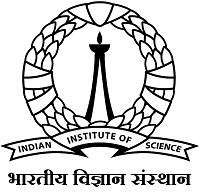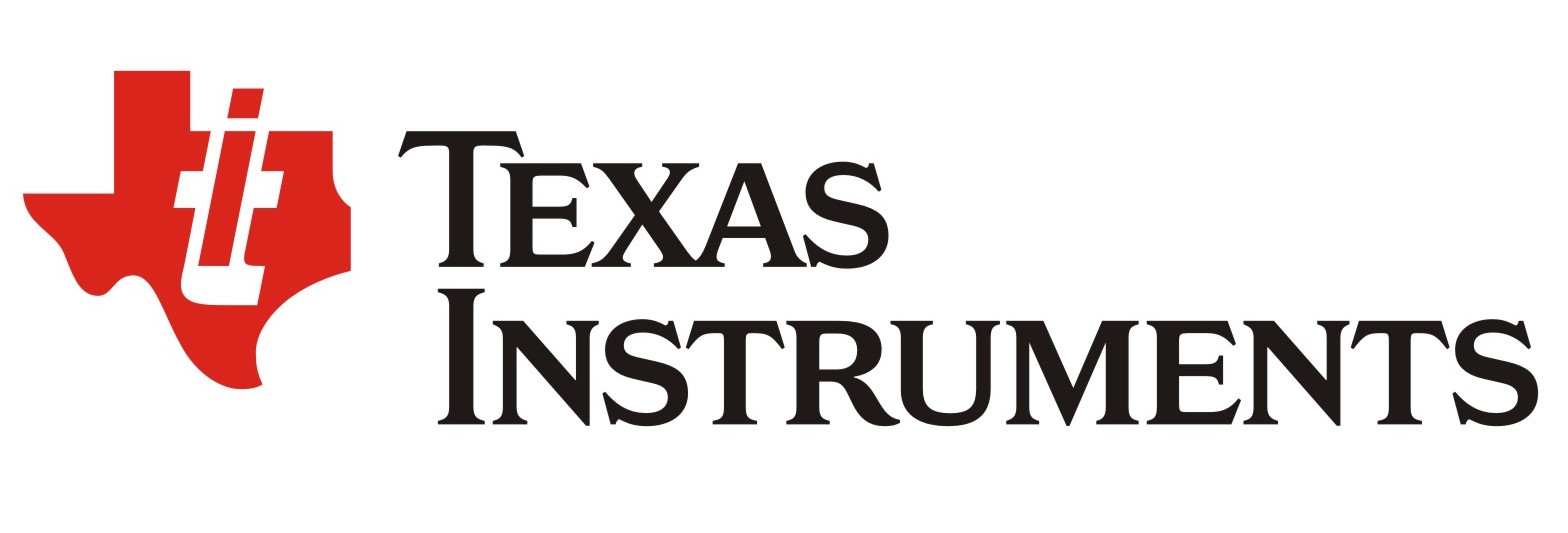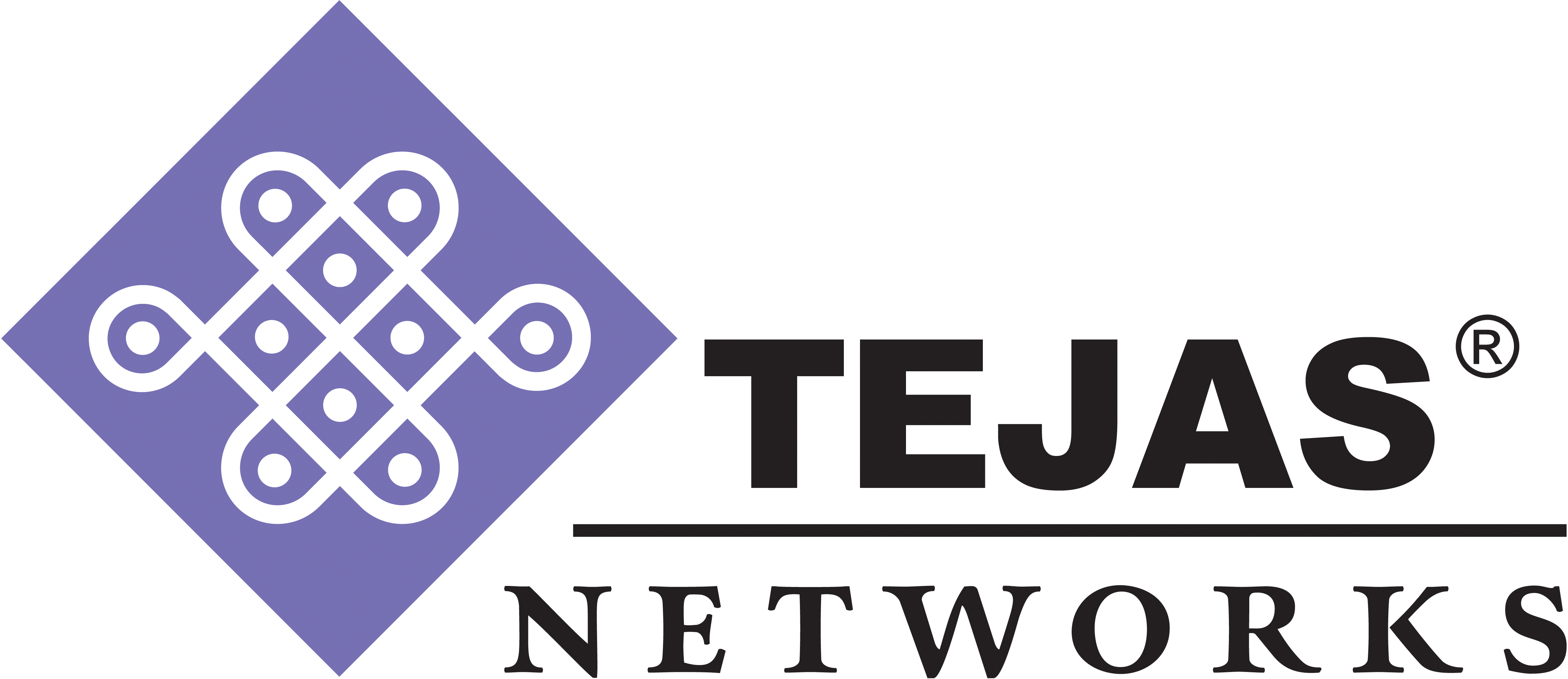


Sumohana S. Channappayya is a Professor in the Department of Electrical Engineering, IIT Hyderabad. He did his B.E. in Electronics and Communication Engineering from the University of Mysore, M.S. in Electrical Engineering from Arizona State University, and Ph.D. in Electrical Engineering from the University of Texas at Austin. His research interests include image and video quality assessment, biomedical image processing, and machine learning.
Abstract: This talk presents our recent work on addressing the challenging problem of completely blind video quality assessment (BVQA) of user generated content (UGC). The challenge is twofold since the quality prediction model is oblivious of human opinion scores, and there are no well-defined distortion models for UGC content. Our solution is inspired by a recent computational neuroscience model which hypothesizes that the human visual system (HVS) transforms a natural video input to follow a straighter temporal trajectory in the perceptual domain. A bandpass filter based computational model of the lateral geniculate nucleus (LGN) and V1 regions of the HVS was used to validate the perceptual straightening hypothesis. We hypothesize that distortions in natural videos lead to loss in straightness (or increased curvature) in their transformed representations in the HVS. We provide extensive empirical evidence to validate our hypothesis. We quantify the loss in straightness as a measure of temporal quality, and show that this measure delivers acceptable quality prediction performance on its own. Further, the temporal quality measure is combined with a state-of-the-art blind spatial (image) quality metric to design a blind video quality predictor that we call STraightness Evaluation Metric (STEM). STEM is shown to deliver state-of-the-art performance over the class of BVQA algorithms on five UGC VQA datasets including KoNViD-1K, LIVE-Qualcomm, LIVE-VQC, CVD and YouTube-UGC. Importantly, our solution is completely blind i.e., training-free, generalizes very well, is explainable, has few tunable parameters, and is simple and easy to implement.
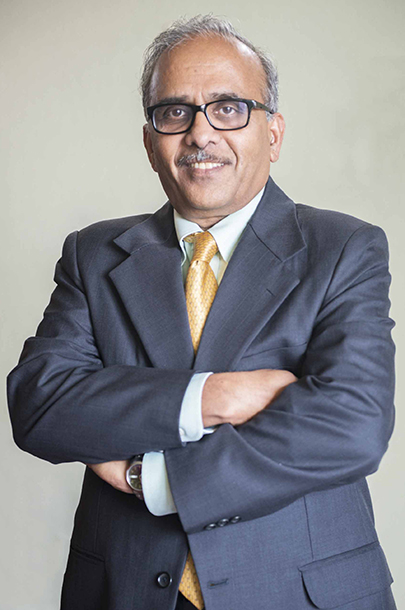
Prof. Vijayakumar (“Kumar”) Bhagavatula has been a faculty member in the Electrical and Computer Engineering (ECE) Department at Carnegie Mellon University (CMU) where he is now the U.A. & Helen Whitaker Professor of ECE. At CMU, he has held multiple leadership positions including Associate Dean, interim Dean of Engineering and most recently as the Director of CMU’s campus in Kigali, Rwanda. Professor Kumar's research interests include Pattern Recognition, Deep Learning, Error Correction Coding and Signal Processing. He has authored or co-authored over 600 technical papers, 24 book chapters, 15 patents and one book entitled Correlation Pattern Recognition. Professor Kumar is a Fellow of IEEE, SPIE, Optica, the International Association of Pattern Recognition (IAPR), National Academy of Inventors (NAI) and the American association for the Advancement of Science (AAAS).
Abstract: Modern vehicles come with many sensors including accelerometers, temperature sensors and GPS. Signal processing methods can be used to extract beneficial information from such crowd-sourced such data from multiple vehicles. In this talk, we will discuss a couple of examples including inferring road maps from GPS data and detecting road potholes from accelerometer data.

Praneeth Netrapalli is a research scientist at Google Research India, Bengaluru. He is also an adjunct professor at TIFR, Mumbai and a faculty associate of ICTS, Bengaluru. Prior to this, he was a researcher at Microsoft Research. He obtained MS and PhD in ECE from UT Austin, and B-Tech in EE from IIT Bombay. He is a co-recipient of IEEE Signal Processing Society Best Paper Award 2019, Indian National Science Academy (INSA) Medal for Young Scientists 2021 and is an associate of Indian Academy of Sciences (IASc) 2019-2022. His research interests are broadly in designing reliable and robust machine learning algorithms, stochastic and nonconvex optimization, minimax/game theoretic optimization and online learning.
Abstract: Stochastic gradient descent (SGD) is the workhorse of modern machine learning. While SGD has been thoroughly analyzed for independent data and tight finite time guarantees are known, its finite sample performance with dependent data has not been as thoroughly analyzed. In this talk, we will consider SGD-style algorithms for two problems where the data is not independent but rather comes from a Markov chain: learning dynamical systems and Q-learning for reinforcement learning. While vanilla SGD is biased and does not converge to the correct solution for these problems, we show that SGD along with a technique known as "reverse experience replay" can efficiently find the optimal solutions.

Marceau Coupechoux received the Engineer degree from Telecom Paris in 1999 and University of Stuttgart in 2000, the Ph.D. degree from Institut Eurecom in 2004, the Habilitation degree from University Pierre et Marie Curie in 2015. He is a Professor at Telecom Paris and a Professeur Chargé de Cours at Ecole Polytechnique. From 2000 to 2005, he was with Bell Labs. In 2011-2012, he was a Visiting Scientist with the Indian Institute of Science, Bengaluru, India. He has been a General Co-Chair of WiOpt 2017 and Gamenets 2019. In the Computer and Network Science Department of Telecom Paris, he is working on wireless and cellular networks, focusing mainly on performance evaluation, optimization and resource allocation.
Abstract: We tackle in this work the problem for a player to efficiently bid in Simultaneous Ascending Auctions (SAA). Although the success of SAA partially comes from its relative simplicity, bidding efficiently in such an auction is complicated as it presents a number of complex strategical problems. No generic algorithm or analytical solution has yet been able to compute the optimal bidding strategy in face of such complexities. By modelling the auction as a turn-based deterministic game with complete information, we propose the first algorithm which tackles simultaneously two of its main issues: exposure and own price effect. Our bidding strategy is computed by Monte Carlo Tree Search (MCTS) which relies on a new method for the prediction of closing prices. We show that our algorithm significantly outperforms state-of-the-art existing bidding methods. More precisely, our algorithm achieves a higher expected utility by taking lower risks than existing strategies.
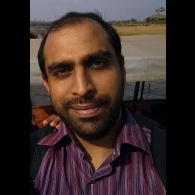
Albert Sunny is currently a faculty in the CSE department of IIT Palakkad. Prior to this, he was a post-doctoral fellow with the NEO team, INRIA Sophia Antipolis, France. He completed his B.Tech. in Electrical and Electronics engineering from National Institute of Technology, Calicut, India and M.Sc.(Engg.) from Department of Electronic Systems Engineering, Indian Institute of Science, Bangalore, India. He went on to complete his Ph.D. at the Department of Electronic Systems Engineering, Indian Institute of Science, Bangalore, India. His research interests are in modelling, analysis and control of wireless and social networks.
Abstract: Until recently, schedulers in cellular networks were designed for traditional single-rate video streaming and elastic data flows. While these schedulers incorporated sophisticated radio resource management techniques, they lack the mechanism to handle adaptive video streams, which behave quiet differently from the traditional video streams. In this talk, I will present the approach we took to design a scheduler for cellular networks that takes into consideration the dynamics of adaptive video streams.
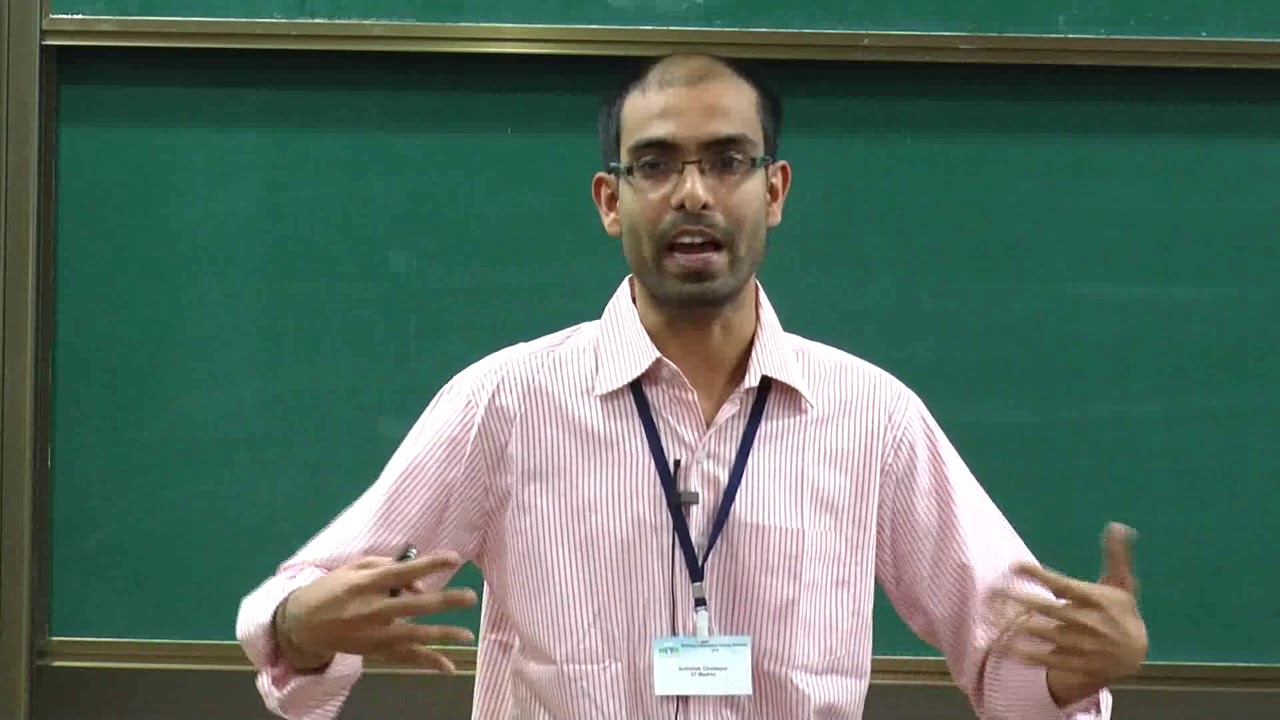
Avhishek Chatterjee is an assistant professor in the Department of Electrical Engineering at the Indian Institute of Technology Madras. Prior to that he was a postdoctoral research associate at the Coordinated Science Laboratory of the University of Illinois at Urbana-Champaign. He obtained Ph.D. in Electrical and Computer Engineering from The University of Texas at Austin and ME in telecommunication from the Indian Institute of Science, Bangalore. His research interest lies in the study of dynamics, optimal design, and operation of stochastic networks, with applications in social networks, crowdsourcing systems and (classical and quantum) communication networks.
Abstract:
We model an epidemic where the per-person infectiousness in a network of geographic localities changes
with the total number of active cases. This would happen as people adopt more stringent non-pharmaceutical
precautions when the population has a larger number of active cases. We show that there exists a sharp
threshold such that when the curing rate for the infection is above this threshold, the mean time for the
epidemic to die out is logarithmic in the initial infection size, whereas when the curing rate is below
this threshold, the mean time for epidemic extinction is infinite. We also show that when the per-person
infectiousness goes to zero asymptotically as a function of the number of active cases, the mean
extinction times all have the same asymptote independent of network structure. Simulations bear out these
results, while also demonstrating that if the per-person infectiousness is large when the epidemic size is
small (i.e., the precautions are lax when the epidemic is small and only get stringent after the epidemic
has become large), it might take a very long time for the epidemic to die out. We also provide some
analytical insight into these observations.
This is a joint work with Akhil Bhimaraju (IIT Madras/UIUC) and Lav Varshney (UIUC).
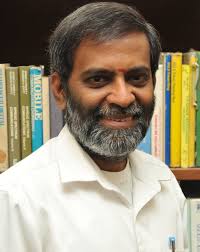
A. Chockalingam received the B.E. degree in Electronics and Communication Engineering from P.S.G. College of Technology, Coimbatore, in 1984 and the M.Tech degree in Electronics and Electrical Communication Engineering from IIT, Kharagpur, in 1985. In 1993, he obtained the Ph.D. degree in Electrical Communication Engineering from IISc, Bangalore. He was a post-doctoral fellow at the University of California, San Diego (UCSD) from Dec-1993 to Nov-1995. From Dec-1995 to May-1996, he worked as an Assistant Project Scientist at UCSD. He worked as a Staff Engineer/Manager at Qualcomm, Inc., San Diego. Currently, he is a professor in the department of Electrical Communication Engineering at IISc, Bangalore. He is an author of the book on Large MIMO Systems published by Cambridge University Press. He is a recipient of the prestigious J. C. Bose National Fellowship, Department of Science and Technology, Government of India.
Abstract: Two research topics, namely, reconfigurable intelligent surfaces (RIS) and orthogonal time frequency space (OTFS) modulation, have drawn significant interest in recent wireless research. While RIS technology can aid communication by favorably controlling the electromagnetic wave propagation towards the receiver, OTFS modulation can offer robust performance in high-Doppler channels. Both RIS and OTFS are envisioned to be promising technologies for 6G and beyond. Both these topics are being researched independently so far. In this talk, we will share some of our early results on RIS-aided OTFS modulation in high-Doppler channels. Some highlights include 1) derivation of the end-to-end delay-Doppler (DD) input-output relation in an RIS-aided OTFS system that can aid the development of efficient transceiver algorithms and performance evaluation, 2) RIS phase vector design based on maximization of the Frobenius norm of the end-to-end DD channel matrix, and 3) demonstration of the superior performance of RIS-aided OTFS compared to RIS-aided OFDM in high-Doppler channels.
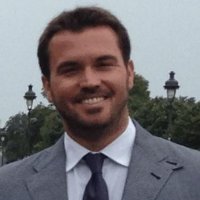
George C. Alexandropoulos received the Engineering Diploma, M.A.Sc., and Ph.D. degrees in Computer Engineering and Informatics from the School of Engineering, University of Patras, Greece in 2003, 2005, and 2010, respectively. He has held research positions at various Greek universities and research institutes, as well as at the Mathematical and Algorithmic Sciences Lab, Paris Research Center, Huawei Technologies France, and he is currently an Assistant Professor with the Department of Informatics and Telecommunications, School of Sciences, National and Kapodistrian University of Athens (NKUA), Greece. He also serves as a Principal Researcher for the Technology Innovation Institute, Abu Dhabi, United Arab Emirates. His research interests span the general areas of algorithmic design and performance analysis for wireless networks with emphasis on multi-antenna transceiver hardware architectures, active and passive reconfigurable metasurfaces, integrated communications and sensing, millimeter wave and THz communications, as well as distributed machine learning algorithms. He currently serves as an Editor for IEEE Transactions on Communications, IEEE Wireless Communications Letters, ELSEVIER Computer Networks, Frontiers in Communications and Networks, and the ITU Journal on Future and Evolving Technologies. In the past, he has held various fixed-term and guest editorial positions for IEEE Transactions on Wireless Communications and IEEE Communications Letters, as well as for various special issues at IEEE journals. Prof. Alexandropoulos is a Senior Member of the IEEE Communications, Signal Processing, and Information Theory Societies as well as a registered Professional Engineer of the Technical Chamber of Greece. He is also a Distinguished Lecturer of the IEEE Communications Society. He has participated and/or technically managed more than 10 European Union (EU) research and innovation projects, as well as several Greek and international research projects. He is currently NKUA's principal investigator for the EU H2020 RISE‑6G research and innovation project dealing with RIS-empowered smart wireless environments. He has received the best Ph.D. thesis award 2010, the IEEE Communications Society Best Young Professional in Industry Award 2018, the EURASIP Best Paper Award of the Journal on Wireless Communications and Networking 2021, the IEEE Marconi Prize Paper Award in Wireless Communications 2021, and a Best Paper Award from the IEEE GLOBECOM 2021. More information is available at www.alexandropoulos.info.
Abstract: The advent of the connected things paradigm within 5G wireless communications enabled various sophisticated applications, whose evolution paves the way for the notion of the connected intelligence of everything in 6G networks. Recent speculations for this upcoming new generation push the 5G performance indicators to unprecedented levels, envisioning THz frequency bands, devices with embedded sensing capabilities, and native AI. All these are expected to become a reality around 2030 and with a strong green footprint. In this talk, we will elaborate around the emerging technology of Reconfigurable Intelligent Surfaces (RISs) which is provisioned as the enabler of smart wireless environments, offering a highly scalable, low-cost, hardware-efficient, and almost energy-neutral solution for the dynamic control of the propagation of electromagnetic signals. We will discuss their evolution from programmable reflecting metamaterials to connected computational- and power-autonomous hybrid metasurfaces capable for providing increased environmental AI for diverse objectives. State-of-the-art approaches for the online orchestration of multi-RIS-enabled smart wireless environments, when targeting communications boosting and large-scale radio-frequency sensing, will be presented, along with key open challenges and research directions.
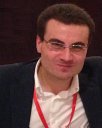
Marco Di Renzo is a CNRS Research Director (Professor) with the Laboratory of Signals and Systems (L2S) of Paris-Saclay University – CNRS and CentraleSupelec, Paris, France. He serves as the Coordinator of the Communications and Networks Research Area of the Laboratory of Excellence DigiCosme, as a Member of the Admission and Evaluation Committee of the Ph.D. School on Information and Communication Technologies, and as the Head of the Intelligent Physical Communications group with the Laboratory of Signals and Systems at CentraleSupelec. He serves as the Editor-in-Chief of IEEE Communications Letters, he is a founding member and a Vice Chair of the Industry Specification Group (ISG) on RIS within the European Telecommunications Standards Institute (ETSI), and he serves as the Rapporteur of the work item on communication models, channel models, and evaluation methodology. He is a Fellow of the IEEE, IET, and AAIA; an Ordinary Member of the European Academy of Sciences and Arts, and the Academia Europaea; and a Highly Cited Researcher. Also, he is a Fulbright Fellow and a Nokia Foundation Visiting Professor. His recent research awards include the 2021 EURASIP Best Paper Award and the 2022 IEEE COMSOC Outstanding Paper Award.
Abstract: A Reconfigurable Intelligent Surface (RIS) is a planar structure that is engineered to have properties that enable the dynamic control of the electromagnetic waves. In wireless communications and networks, RISs are an emerging technology for realizing programmable and reconfigurable wireless propagation environments through nearly passive and tunable signal transformations. RIS-assisted programmable wireless environments are a multidisciplinary research endeavor. This presentation is aimed to report the latest research advances on modeling, analyzing, and optimizing RISs for wireless communications with focus on electromagnetically consistent models, analytical frameworks, and optimization algorithms. In addition, the interplay between RISs and holographic surface-based transceivers will be discussed with focus on near-field communications in line-of-sight channels.
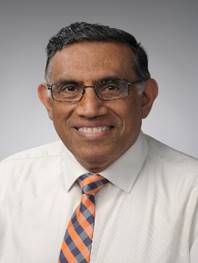
PRAMOD K. VARSHNEY (S’72–M’77–SM’82– F’97–LF’18) was born in Allahabad, India, in 1952. He received the
B.S. degree (Highest Honors) in electrical engineering and computer science and the M.S. and Ph.D.
degrees in electrical engineering from the University of Illinois at Urbana– Champaign, USA, in 1972,
1974, and 1976, respectively. From 1972 to 1976, he held teaching and research assistantships with the
University of Illinois. Since 1976, he has been with Syracuse University, Syracuse, NY, USA, where he is
currently a Distinguished Professor of electrical engineering and computer science and the Director of
the Center for Advanced Systems and Engineering. As the Director of CASE, he is responsible for
technology transition of university expertise to make economic impact in the high-tech economy of New
York. He served as an Associate Chair of the department from 1993 to 1996. He is also an Adjunct
Professor of radiology with Upstate Medical University, Syracuse, NY, USA. He has published extensively.
He is the author of Distributed Detection and Data Fusion (New York, NY, USA: Springer-Verlag, 1997).
His current research interests include distributed sensor networks and data fusion, detection and
estimation theory, wireless communications, image processing, radar signal processing, physical layer
security, and machine learning.
Dr. Varshney was a James Scholar, a Bronze Tablet Senior, and a fellow while at the University of
Illinois. He is a member of Tau Beta Pi. He received the 1981 ASEE Dow Outstanding Young Faculty Award.
In 1997, he was elected to the grade of fellow of the IEEE for his contributions in the area of
distributed detection and data fusion. In 2000, he received the Third Millennium Medal from the IEEE and
the Chancellor’s Citation for exceptional academic achievement at Syracuse University. He also received
the IEEE 2012 Judith A. Resnik Award, Doctor of Engineering Honoris Causa from Drexel University in
2014, the ECE Distinguished Alumni Award from the University of Illinois in 2015, the ISIF’s Yaakov
Bar-Shalom Award for a Lifetime of Excellence in Information Fusion in 2018, the Claude Shannon-Harry
Nyquist Technical Achievement Award from the IEEE Signal Processing Society and the Pioneer Award from
the IEEE Aerospace and Electronic Society in 2021. He was the Guest Editor of the special issue on data
fusion of the IEEE PROCEEDINGS in 1997. He has served on the Editorial Boards of the Journal on Advances
in Information Fusion, IEEE Transactions of Signal Processing as well as IEEE Signal Processing Magazine
among others. He was the President of International Society of Information Fusion in 2001.
Abstract:
Distributed inference when the participants are only machines or electronic devices, e.g., sensors, has
been explored extensively in the signal processing and machine learning literature. However, there are
fundamental differences between such rational systems and systems where the agents include humans due to
their cognitive limitations, imperfect rationality as well as behavioral uncertainties. In information
fusion systems that include humans, modeling and analysis need to take several factors into account
including cognitive biases of humans, mechanisms to handle uncertainties and noise and unpredictability of
humans, in contrast to inference processes consisting of only machine agents.
In this talk, we discuss some aspects of human-sensor networks by focusing on some specific problems that
include collaborative human decision making with random local thresholds, decision fusion in integrated
human-machine networks, prospect theoretic human decision making in multi-agent systems and portfolio
theory based resource management. In each case, we aim to optimize the system performance based on
appropriate modeling of the human behavior. We also provide a summary of current challenges and research
directions related to this problem domain.

Urbashi Mitra received the B.S. and the M.S. degrees from the University of California at Berkeley and her Ph.D. from Princeton University. Dr. Mitra is currently the Gordon S. Marshall Professor in Engineering at the University of Southern California with appointments in Electrical & Computer Engineering and Computer Science. She was the inaugural Editor-in-Chief for the IEEE Transactions on Molecular, Biological and Multi-scale Communications. She has been a member of the IEEE Information Theory Society's Board of Governors (2002-2007, 2012-2017), the IEEE Signal Processing Society’s Technical Committee on Signal Processing for Communications and Networks (2012-2016), the IEEE Signal Processing Society’s Awards Board (2017-2018), and the Chair/Vice-Chair of the IEEE Communication Theory Technical Committee (2017-2020). Dr. Mitra is a Fellow of the IEEE. She is the recipient of: the 2021 USC Viterbi School of Engineering Senior Research Award, the 2017 IEEE Women in Communications Engineering Technical Achievement Award, a 2015 UK Royal Academy of Engineering Distinguished Visiting Professorship, a 2015 US Fulbright Scholar Award, a 2015-2016 UK Leverhulme Trust Visiting Professorship, IEEE Communications Society Distinguished Lecturer, 2012 Globecom Signal Processing for Communications Symposium Best Paper Award, 2012 US National Academy of Engineering Lillian Gilbreth Lectureship, the 2009 DCOSS Applications & Systems Best Paper Award, Texas Instruments Visiting Professorship (Fall 2002, Rice University), 2001 Okawa Foundation Award, 2000 Ohio State University’s College of Engineering Lumley Award for Research, 1997 Ohio State University’s College of Engineering MacQuigg Award for Teaching, and a 1996 National Science Foundation CAREER Award. She has been an Associate Editor for the following IEEE publications: Transactions on Signal Processing, Transactions on Information Theory, Journal of Oceanic Engineering, and Transactions on Communications and is currently the Area Editor for Communications for the Transactions on Information Theory. Dr. Mitra has held visiting appointments at: King’s College, London, Imperial College, the Delft University of Technology, Stanford University, Rice University, and the Eurecom Institute. Her research interests are in: wireless communications, communication and sensor networks, biological communication systems, detection and estimation and the interface of communication, sensing and control.
Abstract: We formulate unimodal function optimization from incomplete data as matrix completion and factorization problems with unimodal constraints. Such methods find application in a variety of problems such as target localization, environmental monitoring, epidemic detection, and medical diagnosis. We presume that we have incomplete (sparse) and noisy samples of a particular field or image and that our objects of interest have spatial extent and can be modeled as unimodal: there is a single strong signal peak and this signal decays as one moves away from the strong signal peak. By exploiting modern signal processing techniques such as matrix completion and active search methods, we develop a high performance, moderate complexity algorithms for function optimization. We can develop methods for finding multiple local optimia as well as tensor-based methods for multi-modal samples. Initially, we consider one-shot methods based on a fixed set of samples. We then propose both methods for exploration to determine what the a priori samples should be and the associated reconstruction error as well as exploitation methods which actively sample. Our exploration approach is based on exploiting Latin-Squares samples and we use uncertainty bound based active sampling for the exploitation. Theoretical performance bounds are derived and properties of key matrices are proven.
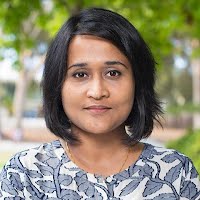
Piya Pal is an Associate Professor of Electrical and Computer Engineering at the University of California, San Diego, where she is also a founding faculty of the Haliciouglu Data Science Institute (HDSI). She obtained her B.Tech in Electronics and Electrical Communication Engineering from IIT Kharagpur, India in 2007, and her Ph.D in Electrical Engineering from Caltech in 2013 supervised by Prof. P. P. Vaidyanathan. Her Ph.D thesis was awarded the 2014 Charles and Ellen Wilts Prize for Outstanding Doctoral Thesis in Electrical Engineering at Caltech. Her research interests include signal representation and sampling techniques for high-dimensional signal/data processing, (sparse) sensor arrays and computational sensing, mathematical foundations of super-resolution imaging, and optimization and machine learning for inverse problems. Her research has been recognized by several awards, including the 2020 IEEE Signal Processing Society Pierre-Simon Laplace Early Career Technical Achievement Award, 2019 US Presidential Early Career Award for Scientists and Engineers (PECASE), 2019 Office of Naval Research Young Investigator Program (ONR YIP) award, 2016 NSF CAREER Award, and several Student Paper Awards including the Best Student Paper Award for her Ph.D students at the 2017 IEEE ICASSP and 2019 IEEE CAMSAP conferences. For her contributions to teaching, she received the ECE Best Graduate Teaching Award at UC San Diego in 2017 and 2018.
Abstract: Convex relaxation has been widely studied as a computationally efficient (and analytically tractable) framework for the problem of super-resolution. However, super-resolution is inherently a non-convex problem. We take a closer look at convex relaxation-based methods and understand their limitations in terms of their achievable sample complexity and how it ultimately dictates the super-resolution limits of these techniques. We will then focus on two classes of (non-convex) super-resolution problems and develop fundamental super-resolution limits of these problems, that can be achieved without resorting to convex relaxation. We also show that it is possible to develop computationally efficient algorithms, often by designing appropriate sensing strategies.

Upamanyu Madhow is Distinguished Professor of Electrical and Computer Engineering at the University of California, Santa Barbara. His current research interests focus on next generation communication, sensing and inference infrastructures centered around millimeter wave systems, and on robust machine learning. Dr. Madhow is an IEEE Fellow, recipient of the 1996 NSF CAREER award, co-recipient of the 2012 IEEE Marconi prize paper award in wireless communications, and recipient of a Distinguished Alumni award in 2018 from the ECE department at the University of Illinois at Urbana-Champaign. He is the author of two textbooks published by Cambridge University Press, Fundamentals of Digital Communication (2008) and Introduction to Communication Systems (2014). He is co-inventor on 31 US patents, and has been involved in several successful technology transfer efforts.
Abstract: Millimeter wave (mmWave) and Terahertz (THz) frequency bands are the next frontier in wireless communication and sensing. The available bandwidth is orders of magnitude higher than in existing systems, and the small carrier wavelengths enable realization of antenna arrays with a large number of elements within reasonable form factor. While this offers unprecedented scaling of available spatiotemporal degrees of freedom, realizing this potential requires moving beyond the RF and hybrid beamforming architectures and moderate bandwidths used in existing mmWave systems, to a “mostly digital” approach which takes advantage of the economies of scale in digital computing which have driven mass market WiFi and cellular products at lower frequency bands. In this talk, we discuss co-design of hardware and signal processing to sidestep and alleviate fundamental bottlenecks to scaling the “mostly digital” paradigm to bandwidths of the order of 10 GHz, at carrier frequencies beyond 100 GHz, using antenna arrays with 100s of elements. These challenges include RF nonlinearities, phase noise, the low precision of the analog-to-digital converters (ADCs) available at multiGHz sampling rates, and DSP complexity.
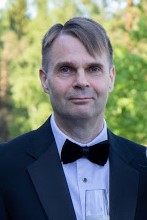
Visa Koivunen (IEEE Fellow, EURASIP Fellow) received the D.Sc. (Tech.) degree with honors from the
Department of Electrical Engineering, University of Oulu, Oulu, Finland. He received the primus doctor
(best graduate) award among the doctoral graduates in years 1989-1994. From 1992 to 1995 he was a
visiting researcher at the University of Pennsylvania, Philadelphia, USA. Since 1999 he has been a full
Professor of Signal Processing at Aalto University (formerly known as Helsinki Univ of Technology),
Finland. He received the Academy professor position n 2010 and Aalto Distinguished Professor in 2020. He
was one of the Principal Investigators in SMARAD Center of Excellence in Research nominated by the
Academy of Finland. Years 2003-2006 he has been also adjunct full professor at the University of
Pennsylvania, Philadelphia, USA. During his sabbatical term year 2007 he was a Visiting Fellow at
Princeton University, NJ, USA. He has also been a part-time Visiting Fellow at Nokia Research Center
(2006-2012). He has been part time visiting fellow at Princeton University since 2010 and spent
mini-sabbaticals there each year and a full sabbatical in 2013-2014.
Dr. Koivunen's research interest include statistical, communications, sensor array signal processing,
radars and machine learning. He has published over 450 papers in international scientific conferences
and journals. He co-authored the papers receiving the best paper award in IEEE PIMRC 2005, EUSIPCO'2006,
EUCAP 2006 and COCORA 2012, and 2019 Asilomar connferences. He was awarded the IEEE Signal Processing
Society best paper award for the year 2007 (with J. Eriksson) and 2017 (w Zoubir, Muma and Chakhchouk).
He has advised 29 doctoral theses. He served as an associate editor for the Proceedings of the IEEE,
IEEE Signal Processing Letters and IEEE Transactions on Signal Processing and IEEE Signal Processing
Magazine. He has been a member of the IEEE SPS technical committees SPCOM-TC and SAM-TC. He was the
general chair of the IEEE SPAWC conference 2007 conference and the Technical Program Chair for the IEEE
SPAWC 2015. He was the general chair of 2018 Asilomar conference. He has served in the IEEE Fourier
Award, Kilby Medal and Fellow Evaluation committees (SPS and AESS), IEEE Radar Systems Panel, and SPS
Awards Board. He is also co-chairing NATO Radar panel with a focus on cognitive radars. He is the
recipient of the EURASIP Technical Achievement Award in 2015 for fundamental contributions to
statistical signal processing and its applications in wireless communications, radar and related fields.
He was elevated to EURASIP Fellow in 2020.
Abstract: In this talk we consider the problem of reinforcement learning based waveform optimization in co-designed and cooperative radar and communication systems operating in a shared spectrum scenarios. Online learning facilitates using the spectrum in an agile and optimized manner while managing and mitigating rapidly time-frequency-space varying interferences. We propose a Model-Based Online Learning (MBOL) algorithm for online waveform optimization in integrated sensing and communications systems (ISAC). Partially observable POMDP model is used. Frequency and power resources are allocated among sensing and communications tasks based on the learned awareness about dynamic channel states and interference statistics. The proposed MBOL algorithm learns a predictive spectrum model using online convex optimization (OCO). Then an optimized controller that assigns sub-bands and allocates power to different sensing and communications tasks is found. The performance of the proposed model-based reinforcement learning method is evaluated in simulations using the proposed constrained regret criterion. The obtained results demonstrate improved sensing and communications performance compared to the baseline method in terms of lower and sub-linear constrained regret. This is joint work with Petteri Pulkkinen. Acknowledgement: Generous support of SAAB for cognitive radar research in gratefully acknowledged.
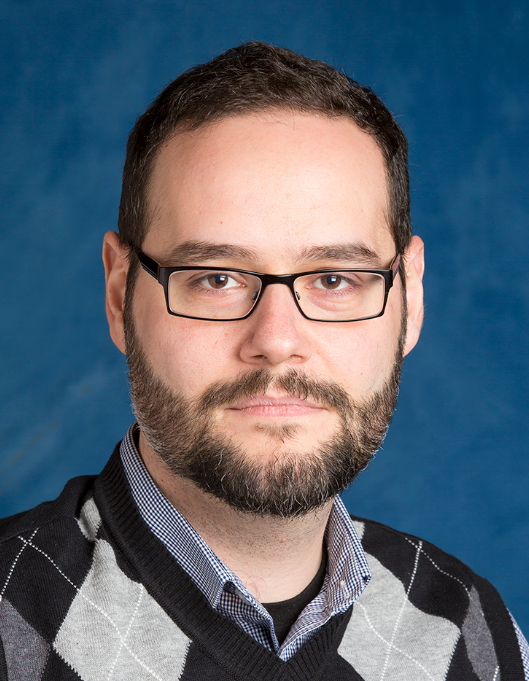
Christos Masouros (SMIEEE, MIET) received the Diploma degree in Electrical and Computer Engineering
from the University of Patras, Greece, in 2004, and MSc by research and PhD in Electrical and Electronic
Engineering from the University of Manchester, UK in 2006 and 2009 respectively. In 2008 he was a
research intern at Philips Research Labs, UK. Between 2009-2010 he was a Research Associate in the
University of Manchester and between 2010-2012 a Research Fellow in Queen's University Belfast. In 2012
he joined University College London as a Lecturer. He has held a Royal Academy of Engineering Research
Fellowship between 2011-2016.
Since 2019 he is a Full Professor of Signal Processing and Wireless Communications in the Information
and Communication Engineering research group, Dept. Electrical and Electronic Engineering, and
affiliated with the Institute for Communications and Connected Systems, University College London. His
research interests lie in the field of wireless communications and signal processing with particular
focus on Green Communications, Large Scale Antenna Systems, Integrated Sensing and Communications,
interference mitigation techniques for MIMO and multicarrier communications. He was the co-recipient of
the 2021 IEEE SPS Young Author Best Paper Award. He was the recipient of the Best Paper Awards in the
IEEE GlobeCom 2015 and IEEE WCNC 2019 conferences, and has been recognised as an Exemplary Editor for
the IEEE Communications Letters, and as an Exemplary Reviewer for the IEEE Transactions on
Communications. He is an Editor for IEEE Transactions on Wireless Communications, the IEEE Open Journal
of Signal Processing, and Editor-at-Large for IEEE Open Journal of the Communications Society. He has
been an Editor for IEEE Transactions on Communications, IEEE Communications Letters, and a Guest Editor
for a number of IEEE Journal on Selected Topics in Signal Processing and IEEE Journal on Selected Areas
in Communications issues. He is a founding member and Vice-Chair of the IEEE Emerging Technology
Initiative on Integrated Sensing and Communications, Vice Chair of the IEEE Special Interest Group on
Integrated sensing and communications (ISAC), and Chair of the IEEE Special Interest Group on Energy
Harvesting Communication Networks.
Abstract: The integration of sensing and communication functionalities is seen as a key enabling technology for 6G networks to provide services beyond communications. It has obvious gains in energy-, hardware- and cost- efficiency through the use of dual-functional hardware, but their co-design also offers opportunities in flexible trade-offs and new synergies between sensing and communication. In this talk, I discuss signalling strategies that enable information exchange together with target detection from a single transmission. These range from radar-centric and communication-centric, to joint signalling. I present some results from my team’s work in the area, that underline the benefits of the co-design in offering a graceful trade-off between the two functionalities. I then discuss use cases that highlight potential synergies between sensing and communications. I conclude with some thoughts on research opportunities and the road ahead.
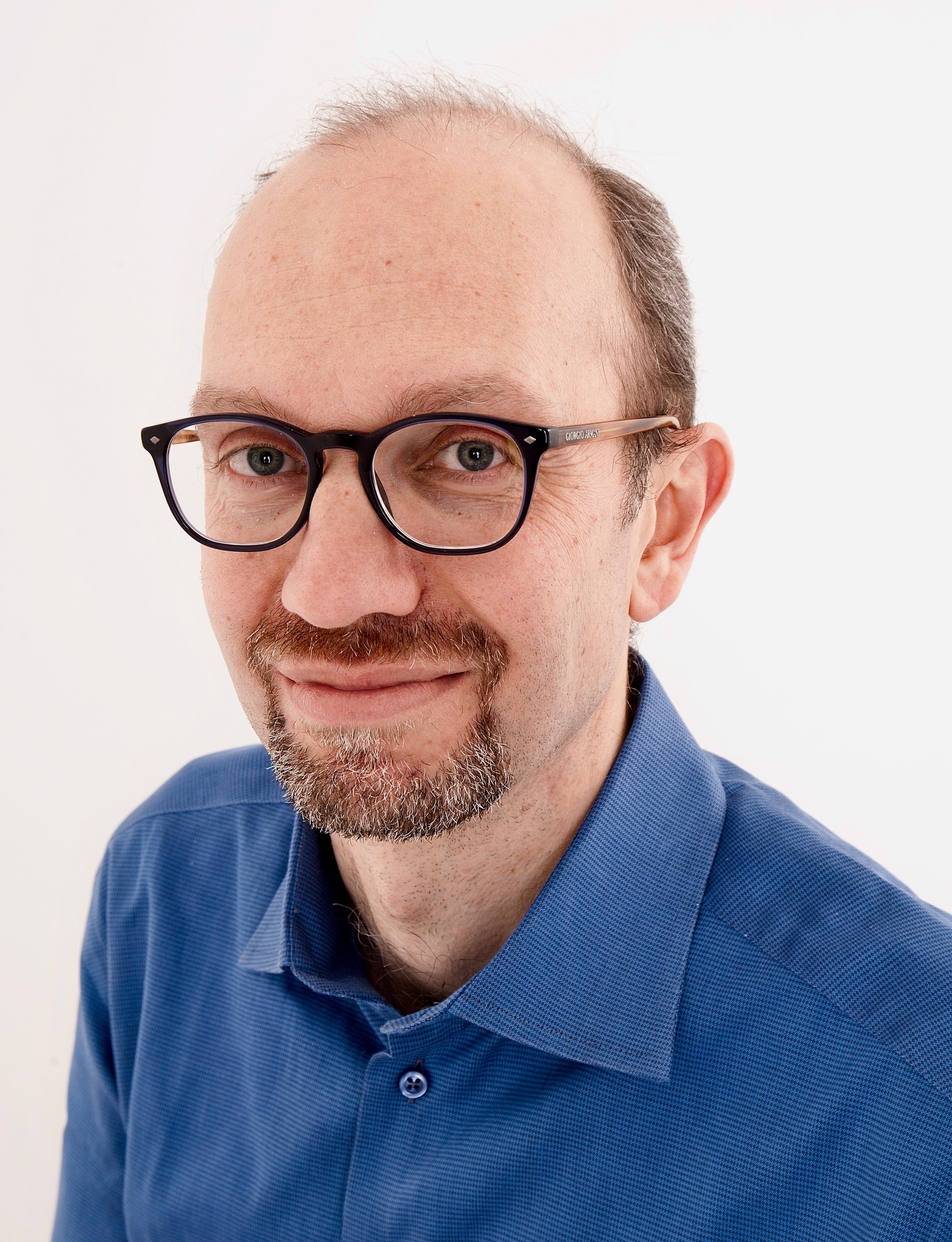
Pier Luigi Dragotti is Professor of Signal Processing in the Electrical and Electronic Engineering
Department at Imperial College London and a Fellow of the IEEE. He received the Laurea Degree (summa cum
laude) in Electronic Engineering from the University Federico II, Naples, Italy, in 1997; the Master
degree in Communications Systems from the Swiss Federal Institute of Technology of Lausanne (EPFL),
Switzerland in 1998; and the PhD degree from EPFL in 2002. He has held several visiting positions
including at Stanford University, Stanford, CA in 1996, at Bell Labs, Lucent Technologies, Murray Hill,
NJ in 2000, and at Massachusetts Institute of Technology (MIT) in 2011.
Dragotti was Editor-in-Chief of the IEEE Transactions on Signal Processing, from January 2018 to
December 2020; Technical Co-Chair for the European Signal Processing Conference in 2012 and Associate
Editor of the IEEE Transactions on Image Processing from 2006 to 2009. In 2011 he was awarded the ERC
starting investigator award (consolidator stream) for the project RecoSamp. Currently, he is IEEE SPS
Distinguished Lecturer.
His research interests include sampling theory and its applications, computational imaging and
data-driven signal processing with applications in art investigation and in neuroscience.
Abstract:
Traditional signal processing is based on the idea that an analogue waveform should be converted in
digital form by recording its amplitude information at specific time instants. Nearly all data
acquisition, processing and communication methods have progressed by relying on this fundamental sampling
paradigm. Interestingly, we know that the brain operates differently and represents signals using networks
of spiking neurons where the timing of the spikes encodes the signal's information. This form of
processing by spikes is more efficient and is inspiring a new generation of event-based audio-visual
sensing and processing architectures.
In this talk, we investigate time encoding as an alternative method to classical
sampling, and address the problem of reconstructing classes of sparse non-bandlimited signals from
time-based samples. We consider a sampling mechanism based on first filtering the input, before obtaining
the timing information using a time encoding machine. Leveraging specific properties of these filters, we
derive sufficient conditions and propose novel algorithms for perfect reconstruction of classes of sparse
signals.
We then extend our analysis to multi-dimensional signals and present a model for an alternative
event-driven camera which also inspires a neural network architecture for the reconstruction of intensity
videos from events.
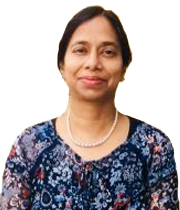
Anubha Gupta (anubha@iiitd.ac.in) received her B.Tech and M.Tech from Delhi University, India in 1991 and 1997 in Electronics and Communication Engineering. She received her PhD. from Indian Institute of Technology (IIT), Delhi, India in 2006 in Electrical Engineering. She did her second Master’s as a full time student from the University of Maryland, College Park, USA from 2008-2010 in Education. She worked as Assistant Director with the Ministry of Information and Broadcasting, Govt. of India (through Indian Engineering Services) from 1993 to 1999 and, as faculty at NSUT-Delhi (2000-2008) and IIIT-Hyderabad (2011-2013), India. Currently, she is working as a Professor at IIIT-Delhi. She has authored/co-authored more than 100 technical papers in scientific journals and conferences. She has published research papers in both engineering and education. A lot of exciting work is being taken up in her lab: SBILab (Lab: http://sbilab.iiitd.edu.in/index.html). Her research interests include applications of machine learning in cancer genomics, cancer imaging, biomedical signal and image processing including fMRI, MRI, EEG, ECG signal processing, and Wavelets in deep learning. Dr. Gupta is a senior member of IEEE Signal Processing Society (SPS) and a member of IEEE Women in Engineering Society. She is an Associate Editor of IEEE Access journal, IEEE SPS Magazine eNewsletter, Frontiers in Neuroscience, and IETE Journal of Research. She is also the technical committee member of BISP committee of IEEE SPS Society for Jan 2022- Dec 2024.
Abstract: In this talk, we will cover some deep learning architectures on ECG data analysis proposed by us for the identification of cardiac disorders, identification of post-COVID patients from healthy, and the identification of burnout/stressed from healthy among healthcare workers (working as COVID caregivers) in India based on ECG waveform changes. In addition, we have tried to understand the interpretability of these AI models by identifying changes on ECG waveforms as observed by doctors on raw ECG waveforms. We will present this work and also highlight some important points for building interpretable AI models for medical data analysis.

Vishal M. Patel is an Associate Professor in the Department of Electrical and Computer Engineering (ECE) at Johns Hopkins University. Prior to joining Hopkins, he was an A. Walter Tyson Assistant Professor in the Department of ECE at Rutgers University and a member of the research faculty at the University of Maryland Institute for Advanced Computer Studies (UMIACS). He completed his Ph.D. in Electrical Engineering from the University of Maryland, College Park, MD, in 2010. He has received a number of awards including the 2021 IEEE Signal Processing Society (SPS) Pierre-Simon Laplace Early Career Technical Achievement Award, the 2021 NSF CAREER Award, the 2021 IAPR Young Biometrics Investigator Award (YBIA), the 2016 ONR Young Investigator Award, the 2016 Jimmy Lin Award for Invention, A. Walter Tyson Assistant Professorship Award, Best Paper Awards at IEEE AVSS 2017 & 2019, IEEE BTAS 2015, IAPR ICB 2018, IEEE ICIP 2021, and two Best Student Paper Awards at IAPR ICPR 2018. He is an Associate Editor of the IEEE Transactions on Pattern Analysis and Machine Intelligence, Pattern Recognition Journal, and serves on the Machine Learning for Signal Processing (MLSP) Committee of the IEEE Signal Processing Society. He serves as the vice president of conferences for the IEEE Biometrics Council.
Abstract: Recent advances in deep learning have led to the development of accurate and efficient models for object detection. However, learning highly accurate models relies on the availability of large-scale annotated datasets. Due to this, model performance drops drastically when evaluated on label-scarce datasets having visually distinct images. Domain adaptation tries to mitigate this degradation. In this talk, I will present some of our recent works on domain adaptive object detection. In particular, unsupervised, source-free and fully test-time adaptive object detection methods will be presented.

Sharayu Moharir is an Associate Professor in the Department of Electrical Engineering, Indian Institute of Technology Bombay. Prior to that, she was a visiting fellow in the School of Technology and Computer Science at the Tata Institute of Fundamental Research (TIFR), Mumbai. She obtained her Ph.D. in Electrical and Computer Engineering from the University of Texas at Austin and her B.Tech. in Electrical Engineering and M.Tech. in Communications and Signal Processing from IIT Bombay. Her research interests are modeling and the design of scalable resource allocation algorithms for large networks.
Abstract: We consider the online caching problem for a cache of limited size. In a time-slotted system, a user requests one file from a large catalog in each slot. If the requested file is cached, the policy receives a unit reward and zero rewards otherwise. We show that a Follow the Perturbed Leader (FTLP)-based anytime caching policy is simultaneously regret-optimal for both adversarial and i.i.d. stochastic arrivals. We show that these results can be generalized to the setting when there are constraints on the frequency with which cache contents can be changed. Further, in the setting where there is a cost associated with switching the cached contents, we propose a variant of FTPL that is order-optimal with respect to time for both adversarial and stochastic arrivals and has a significantly better performance compared to FTPL with respect to the switching cost for stochastic arrivals.
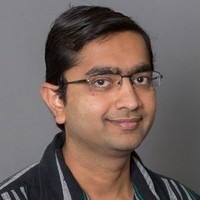
Vaneet Aggarwal received the B.Tech. degree from the Indian Institute of Technology, Kanpur, India in
2005, and the M.A. and Ph.D. degrees in 2007 and 2010, respectively from Princeton University,
Princeton,
NJ, USA, all in Electrical Engineering. He is a Professor at Purdue University, West Lafayette, IN
(currently Associate Professor, Full Professor from Aug 2022), where he has been since Jan 2015. He was
a
Senior Member of Technical Staff Research at AT&T Labs-Research, NJ (2010-2014), Adjunct Assistant
Professor at Columbia University, NY (2013-2014), and VAJRA Adjunct Professor at IISc Bangalore
(2018-2019), and is currently an Adjunct Professor at IIIT Delhi (2022-current). His current research
interests are in machine learning.
Dr. Aggarwal received Princeton University’s Porter Ogden Jacobus Honorific Fellowship in 2009, the AT&T
Vice President Excellence Award in 2012, the AT&T Key Contributor Award in 2013, the AT&T Senior Vice
President Excellence Award in 2014, and the Purdue Most Impactful Faculty Innovator in 2020. He received
the 2017 Jack Neubauer Memorial Award recognizing the Best Systems Paper published in the IEEE
Transactions on Vehicular Technology, the 2018 Infocom Workshop Best Paper Award, and 2021 NeurIPS
Workshop Best Paper Award. He was on the Editorial Board of IEEE Transactions on Green Communications
and
Networking and the IEEE Transactions on Communications, and is currently on the Editorial Board of the
IEEE/ACM Transactions on Networking, and the founding co-Editor-in-Chief of the ACM Journal on
Transportation Systems.
Abstract: Mean field control (MFC) is an effective way to mitigate the curse of dimensionality of cooperative multi-agent reinforcement learning (MARL) problems. In this work, we will show that MFC is indeed a good approximation to MARL in variety of setups, including heterogenous agents, non-uniform interaction, and in the presence of constraints. Further, the approach of MFC allows for decentralized execution, which will also be discussed.
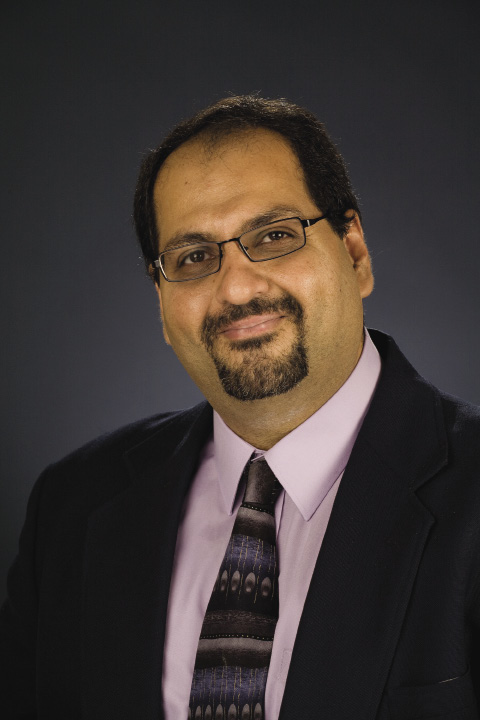
Ness Shroff received the Ph.D. degree in Electrical Engineering from Columbia University in 1994. He joined Purdue University immediately thereafter as an Assistant Professor. At Purdue, he became Professor of the school of Electrical and Computer Engineering and director of CWSA in 2004, a university-wide center on wireless systems and applications. In 2007, he joined the ECE and CSE departments at The Ohio State University, where he holds the Ohio Eminent Scholar Chaired Professorship of Networking and Communications. He holds, or has held, visiting (Chaired) Professor positions at Tsinghua University, Beijing, China; Shanghai Jiaotong University, Shanghai, China; and IIT Bombay, Mumbai, India. He has received numerous best paper awards for his research, and is listed in Thomson Reuters’ on The World’s Most Influential Scientific Minds, and has been noted as a Highly Cited Researcher by Thomson Reuters in 2014 and 2015. He currently serves as the Steering Committee Chair for ACM Mobihoc, and Editor in Chief of the IEEE/ACM Transactions on Networking. In 2014, he received the IEEE INFOCOM Achievement Award for seminal contributions to scheduling and resource allocation in wireless networks. He currently serves as the Institute Director of AI-EDGE, a new NSF AI Institute for designing future edge networks and distributed intelligence.
Abstract: Edge caching has been widely implemented to efficiently serve data requests from end users. Numerous edge caching policies have been proposed to adaptively update cache content based on various statistics including data popularities and miss costs. These policies typically assume that the miss cost for each data item is known, which is not true in real systems. A promising approach would be to use online learning to estimate these unknown miss costs. However, existing techniques cannot be directly applied because the caching problem has additional cache capacity and cache update constraints that are not covered in traditional learning settings. In this work, we resolve these issues by developing a novel edge caching policy that learns uncertainty miss costs efficiently, and is shown to be asymptotically optimal. We first derive an asymptotic lower bound on the achievable regret. We then design a KL-LCB based edge caching policy, which adaptively learns the random miss costs by following the "optimism in the face of uncertainty" principle. By employing a novel analysis that accounts for the new constraints and the dynamics of the setting, we prove that the regret of the proposed policy matches the regret lower bound, thus showing asymptotic optimality. Further, via numerical experiments we demonstrate the performance improvements of our policy over natural benchmarks.


